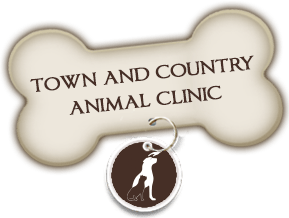Many people have heard about or know about some of the serious illnesses that can affect our dog companions such as Canine Parvovirus and Rabies. And during routine vaccination appointments your dog is vaccinated against Rabies along with the 6 in 1 Distemper/Parvovirus combination vaccine. This vaccine protects our dogs against Distemper, Hepatitis, Leptovirus (4 strains), Parvovirus and Parainfluenza. Depending on your dogs risk factors they may also be vaccinated against Bordetella (Kennel Cough) which is an airborne disease that is easily transmitted especially in places like the dog park, grooming facilities, boarding facilities or doggie daycares. We want to take a moment to discuss two diseases and vaccinations that you may or may not have heard about: Leptospirosis and Lyme Disease. In this blog we will discuss Lyme disease; it’s transmission, clinical significance and treatment.

To many this sounds familiar as it is a disease that humans can be afflicted by. This bacteria is spread by ticks, specifically the Black Legged Deer Tick (Ixodes scapularis), which often feeds on rodents in its early stages. Later, the tick can attach to a dog or human and transmit the bacteria, Borrelia burgdorferi, that causes Lyme disease.
Fortunately, unlike people, dogs who are infected with the bacteria have a 10% chance of developing clinical Lyme disease and symptoms with many remaining subclinical (no apparent signs of Lyme disease). Whereas in humans, 70-80% of people bitten by a tick infected with the bacteria will develop clinical Lyme disease and symptoms.
When a tick attaches to a patient, the mouth parts of “buried” into the skin layer where the tick then produces a secretion from it’s mouth parts that acts as “cement” to keep the tick in place. The tick does not transmit infection immediately upon first attachment to a host, but instead require a period of approximately 24 to 48 hours of initial feeding before organisms are able to pass across the salivary glands and into the host (dog, human, cat, deer etc). There is no evidence to suggest that infected dogs pose a risk to other members of the household except as a reservoir of infected ticks. Once a tick has had a full meal, it will detach and not bite another mammal. The risk comes from ticks that have not gotten a complete meal and are detached. They could possibly seek out a human and bite them causing infection.
There are endemic areas where Deer Ticks have been more prevalent and Lyme disease has been found. These include Turkey Point, 
SYMPTOMS
Dogs do not develop the typical rash or the circular area of redness (“target”) around the bite which is seen in people. The most common symptoms are a fever of between 103 and 105°, lameness, swelling in the joints, swollen lymph nodes, lethargy, and loss of appetite. Clinical signs of the disease in pets typically occur 2 – 5 months after exposure to the bacteria.
Many dogs who develop Lyme disease have recurrent lameness due to inflammation of the joints. Sometimes the lameness lasts for only three to four days but recurs days to weeks later, either in the same leg or in other legs. This is known as “shifting-leg lameness.” One or more joints may be swollen, warm, and painful.
Some dogs may also develop kidney problems. Eventually, kidney failure may set in as the dog begins to exhibit such signs as vomiting, diarrhea, lack of appetite, weight loss, increased urination and thirst, and abnormal fluid buildups.
Other symptoms associated with Lyme disease include:
- Stiff walk with an arched back
- Sensitivity to touch
- Difficulty breathing
- Fever, lack of appetite, and depression
- Superficial lymph nodes close to the site of the infecting tick bite may be swollen
- Heart abnormalities are reported, but rare
- Nervous system complications (rare)As with many illnesses, the above symptoms can be vague and similar to many other disease processes that can occur. A complete history, including past exposure to tick bites ,physical exam along with necessary laboratory work are the tools to differentiate between diseases.
TESTING:
Here at Town and Country Animal Clinic when we test our canine patients for Heartworm disease, the kit that is used to perform this test is a combination test kit. It not only tests for heartworm disease but 3 tick-borne illnesses as well including Lyme disease. This blood test detects antibodies made by the dog in response to infection with bacteria. Many dogs show positive test results, but are not actually clinically infected with the disease. These animals have been exposed to the organism, but fought off the infection on their own. These animals will have antibodies to the bacteria but not have the disease. Therefore, when we have a patient who tests positive for Lyme disease we follow this up with a secondary confirmation test that shows us if the patient requires treatment.
PREVENTION
The good news about ticks, is that unlike fleas, if you find one, does not mean you will find 100 or that they will multiply and infest your home and pet. Your pet is simply a host to feed on to help complete the life cycle of the tick. For patients who visit areas of concern or frequently contract ticks there are steps that are recommended to prevent Lyme disease.- Vaccination: There is a vaccination available against Lyme disease. Although it is possible that some vaccinated animals contract the disease, it appears that vaccinated animals
are far less likely to contract the disease than unvaccinated animals. Vaccinations can be started after 12 weeks of age and it is recommended that two doses be given three weeks apart, then boostered yearly after that. Typically we make the recommendation to vaccinate “at-risk” patients; only dogs that are exposed to ticks in areas where Lyme disease is a problem.
Tick Control: Tick control is probably the most important thing an
owner can do to prevent Lyme disease in their pet. Ticks carry many other diseases besides Lyme disease and by preventing them from attaching to and remaining on your pet, we can prevent these diseases. Avoiding areas of high tick infestation during periods when ticks are active is one of the best ways to avoid contact. Using specific prescription insecticides on the dog that repel tick and kill ticks is another method. Products like K9 Advantix are very good at killing and *repelling ticks and killing fleas (*A label claim for tick repellent is present in the USA but not in Canada however it is the same product). Revolution is an alternative topical which is a combination medication; meaning it is also a heartworm prevention. Depending on the prevention used, if the tick does attach it will die within 12-30 hours. Permethrins, which are the active ingredient used to kill ticks, should NOT be used on cats or allow cats to become in contact with it as it can be toxic and even fatal to cats. Over the counter flea and tick products and collars are not very effective.
Removing a Tick: If you find a tick on your dog, do not panic. There are tools that you can use called Tick Twisters which we provide at the clinic.
Step 1—Prepare its Final Resting Place Throwing a tick in the trash or flushing it down the toilet will not kill it. Be ready with somewhere to put the tick after you’ve removed it—the best option is a screw-top jar containing some rubbing alcohol.
Step 2—Don’t Bare-Hand It Put on latex or rubber gloves so you’ll never have direct contact with the tick or your pet’s bite area. Ticks can carry infective agents that may enter your bloodstream through breaks in your skin or through mucous membranes (if you touch your eyes, nostrils or mouth).
Step 3—Grab a Partner You don’t want your pet squirming away before you’re finished, so if possible, have a helper on hand to distract, soothe or hold her still.
Step 4—The Removal Treat the bite area with rubbing alcohol and, using a pair of tweezers, grasp the tick as close to the animal’s skin as possible. Pull straight upwards with steady, even pressure. Place the tick in your jar.
- Do not squeeze or crush the body of the tick, because its fluids (saliva and gut contents) may contain infective organisms.Step 5—All that Remains Sometimes, in spite of doing everything right, a tick’s mouth-parts will get left behind in your pet’s skin. If the area doesn’t appear red or inflamed, the best thing to do is to disinfect it and not to try to take the mouth-parts out. A warm compress to the area might help the body expel them, but do not go at it with tweezers.
Step 6—Clean Up Thoroughly disinfect the bite site and wash your hands with soap and water (even though you were wearing gloves). Sterilize your tweezers with alcohol.
Step 7—Keep Watch Over the next few weeks, closely monitor the bite area for any signs of localized infection. If the area is already red and inflamed, or becomes so later, please bring your pet—and your jarred tick—to your veterinarian for evaluation.TREATMENT
As stated previously, here at Town and Country Animal Clinic when we test our canine patients for Heartworm disease, the kit that is used to perform this test is a combination test kit. It not only tests for heartworm disease but tick-borne illnesses as well including Lyme disease. This blood test detects antibodies made by the dog in response to infection with bacteria. Many dogs show positive test results, but are not actually clinically infected with the disease. These animals have been antibodies to the bacteria but not have the disease. Therefore, when we have a patient who tests positive for Lyme disease we follow this up with a secondary confirmation test that shows us if the patient requires treatment. Once we have determined the patient is a clinical Lyme disease patient we will begin treatment. Treatment is fairly simple requiring a course of antibiotics. Depending on your pet’s symptoms and discomfort, anti-inflammatories may also be prescribed.If you are ever concerned about your dog, regarding ticks, Lyme disease or any other health concern always feel free to call us to discuss your pet’s well being. 519-250-0099





 TESTING:
TESTING:







